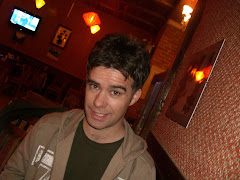Financial News
By Jason Corcoran
12 November 2007
Letter from Moscow
Ireland’s Celtic Tiger cubs have marched across Europe in a spending spree and Moscow has been their target.
Sean Quinn, Ireland’s richest man, according to the 2007 edition of the Sunday Times Rich List, is leading the vanguard of Irish property investors who are fanning out across Russia and the Commonwealth of Independent States in search of big returns.
His investment vehicle Quinn Group is rumoured to be lining up a $250m bid for one of Moscow’s top hotels, the Radisson SAS Slavyanskaya.
The four-star hotel is jointly owned by the city government and Swedish hotel operator SAS Radisson. It is understood that Quinn has asked the hotel’s owners to start due diligence.
The reclusive Fermanagh-born billionaire is the most prominent Irish investor in Russia, having spent an estimated €250m on two shopping malls, €100m on a chain of DIY hypermarkets and €75m on a logistics park.
Quinn, whose empire spans insurance, construction, glass manufacturing and property, has earmarked €3bn to spend in the region over five years. His group has completed office projects in Moscow and the Ukrainian capital Kiev and is constructing office blocks and logistics projects in regional Russian cities.
Treasury Holdings, the Irish group that owns London’s Battersea Power Station, has two big developments under way in St Petersburg, a golf complex costing €200m and a €500m residential scheme for more than 1,000 homes at St Catherine’s Palace.
Quinlan Private, the wealth management group headed by former Irish tax inspector Derek Quinlan, is developing a 100,000 sq ft atrium on St Petersburg’s main street, Nevsky Prospekt.
Redquartz, the property company headed by hotelier Paddy Kelly, has hired broker Cenkos to advise on a listing in February for a €1bn Russian real estate fund.
The fund, which has the working title of Celtic Bear, will invest in 15 real estate projects, mainly in Russia’s regional cities.
Outside property, Irish industrial companies have built a presence through mergers and acquisitions.
Building materials group CRH and paper manufacturer Smurfit Kappa have operations near St Petersburg following acquisitions.
Irish-registered oil and mineral exploration companies Aminex and Celtic Resources also have operations in Russia.
Irish Minister for Trade and Commerce John McGuinness has been to Moscow on a mission to create commercial ties between the two countries. The Government has identified opportunities for Irish companies in IT, healthcare and pharmaceuticals, construction, engineering and the service sector, according to McGuinness.
The minister announced the launch of the first direct flight between Dublin and Moscow. Russian airline S7 is to start flying in April in response to what it claims is growing demand from businessmen and tourists in both countries.
Such is the level of investment from Irish property tycoons that Russia’s Economic Development and Trade Minister, Elvira Nabiullina, last month said Ireland was the 12th largest inward investor in Russia last year.
Rosstat, the federal statistics service, indicated this position has improved,with Irish investors pumping about $2bn into Russia in the first quarter of this year. This puts Irish investment at $4.4bn, placing it sixth in the list of countries that have invested in Russia.
The Irish assault on the eastern front represents a second coming. In the 1990s, Irish investors were pioneers during Russia’s new era of perestroika.
One of them, who did not flee after the 1998 financial crisis, said: “I have been there, got the T-shirt, lost it and got it back again.”
www.efinancialnews.com
Monday 12 November 2007
Celtic Tigers dance with the Russian bear
Labels:
ireland,
Quinlan Private,
quinn group,
sean quinn,
Treasury Holdings
Subscribe to:
Post Comments (Atom)




No comments:
Post a Comment